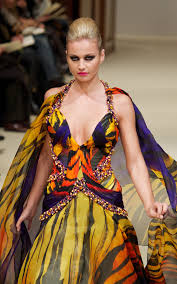Fashion and Sustainability: Future Trends and Challenges
Fashion and Sustainability: Future Trends and Challenges
Blog Article

The fashion industry, long celebrated for its creativity and innovation, is at a critical juncture as it grapples with the pressing issues of sustainability. With the increasing awareness of environmental degradation and the finite nature of our resources, the industry is being called upon to rethink its practices and embrace sustainable models. This article discusses the challenges the fashion industry faces in terms of sustainability and explores the emerging trends and potential solutions that could shape its future.
The Environmental Impact of the Fashion Industry:
The fashion industry is one of the world's largest polluters, second only to oil. From the production of raw materials to the manufacturing and disposal of garments, the environmental footprint is vast. Overconsumption has led to a 'fast fashion' culture, where cheap, trendy clothing is produced in large quantities and quickly discarded, contributing to landfill waste and pollution. The use of non-renewable resources, such as water and petroleum-based synthetic fibers, further exacerbates the problem.
Challenges in Sustainable Fashion:
Transitioning to sustainable practices is not without its challenges. The fashion industry is complex, involving numerous stakeholders from textile manufacturers to retailers. Implementing sustainable practices requires a shift in mindset and significant investment in new technologies and materials. Additionally, there is a need for greater transparency and traceability in supply chains to ensure that sustainable claims are accurate and verifiable.
Sustainable Production Methods:
To mitigate its environmental impact, the fashion industry is exploring various sustainable production methods. The use of organic and recycled materials is becoming more prevalent, reducing the reliance on harmful chemicals and non-renewable resources. Innovations in fabric production, such as the use of algae-based or recycled polyester, are promising developments in the quest for more eco-friendly textiles.
Promoting a Circular Economy:
A key click here aspect of sustainable fashion is the promotion of a circular economy, where materials are kept in use for as check here long as possible, and waste is minimized. This involves designing garments to be durable and repairable, as well as encouraging consumers to buy less and invest in quality over quantity. Rental and resale platforms are gaining popularity, offering an alternative to ownership and extending the life of garments.
The Role of Technology:
Technology plays a crucial role in driving sustainability in the fashion industry. From digital design tools that reduce the need for physical samples to blockchain more info technology that enhances supply chain transparency, technological advancements are helping to create a more sustainable landscape. Additionally, innovations in recycling technology, such as chemical recycling of textiles, offer hope for a more circular fashion system.
Consumer Behavior and Education:
Changing consumer behavior is another critical component of sustainable fashion. Educating consumers about the environmental impact of their choices and promoting mindful consumption is essential. Brands that prioritize sustainability are increasingly sought after by consumers who are becoming more conscious of the impact of their purchases.
The fashion industry's journey towards sustainability is complex and challenging, but it is a necessary evolution for the sake of our planet. By embracing sustainable production methods, promoting a circular economy, leveraging technology, and educating consumers, the industry can begin to address its environmental impact. The future of fashion lies in its ability to innovate and adapt, creating a more sustainable and responsible industry that values the well-being of both people and the planet. As consumers and industry professionals alike demand more from the fashion world, the path towards a sustainable future becomes clearer, offering hope for a greener and more ethical fashion landscape.